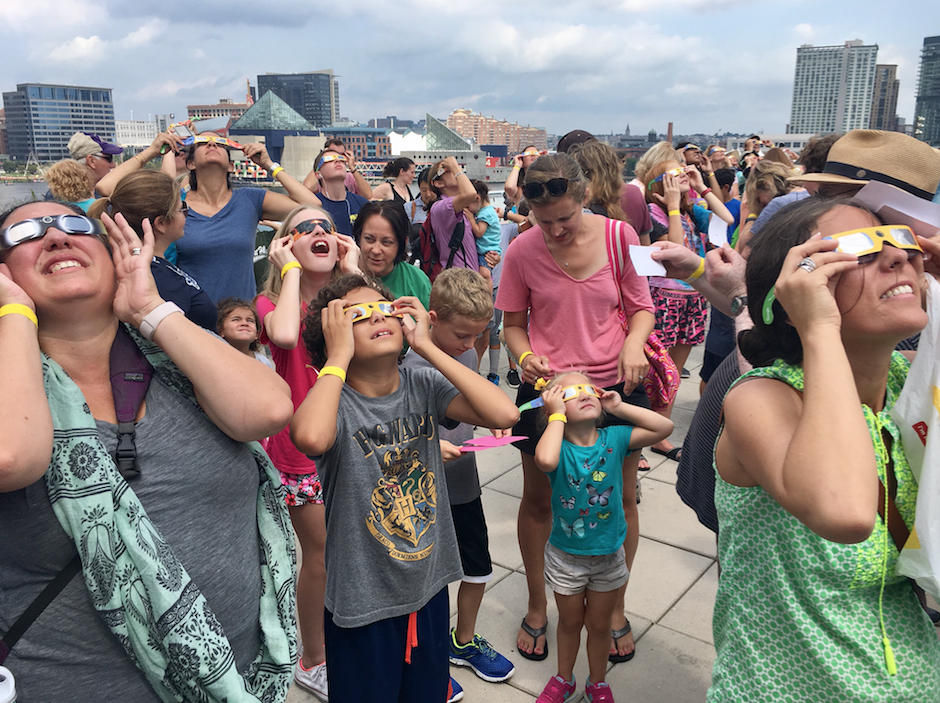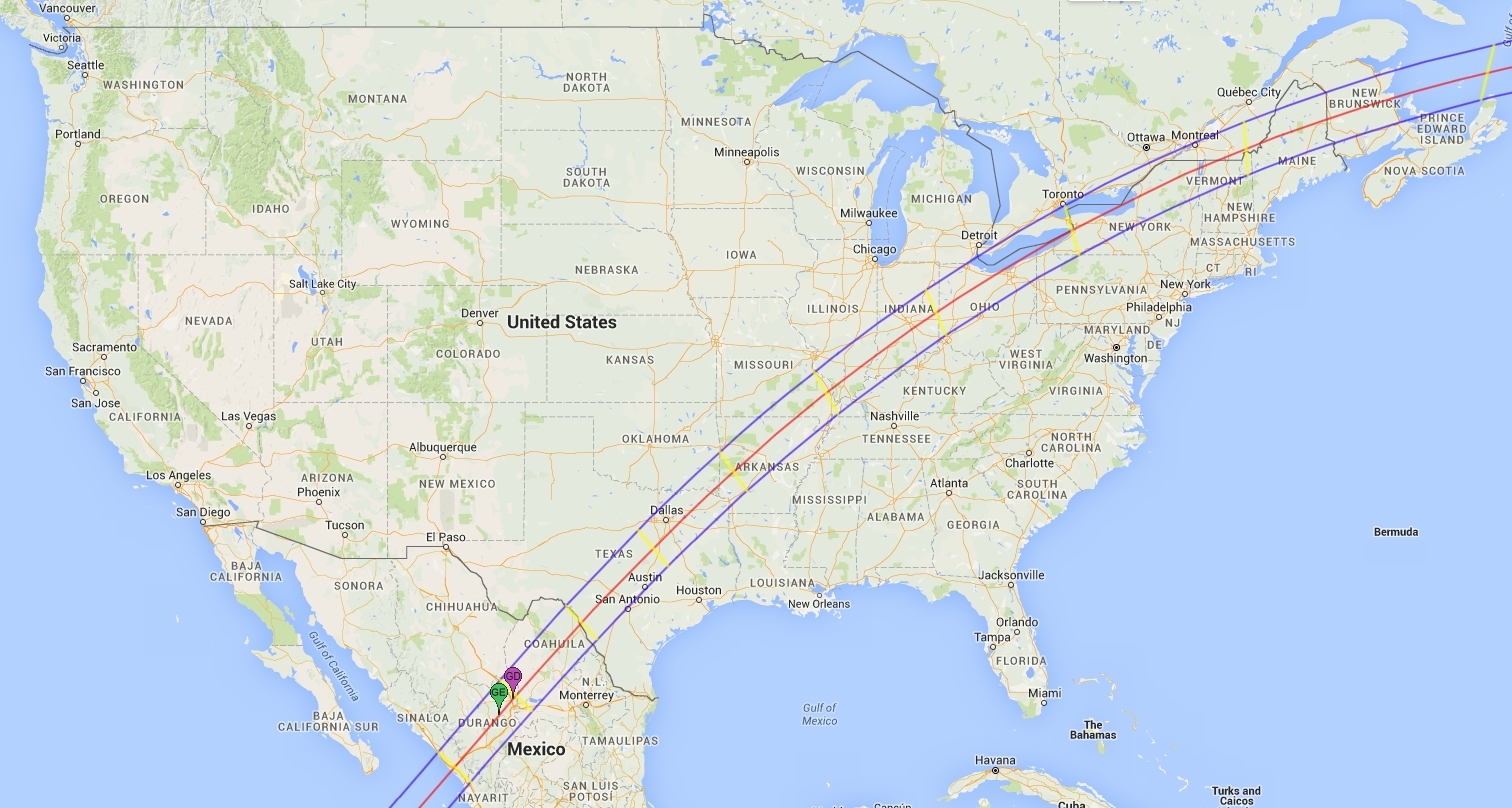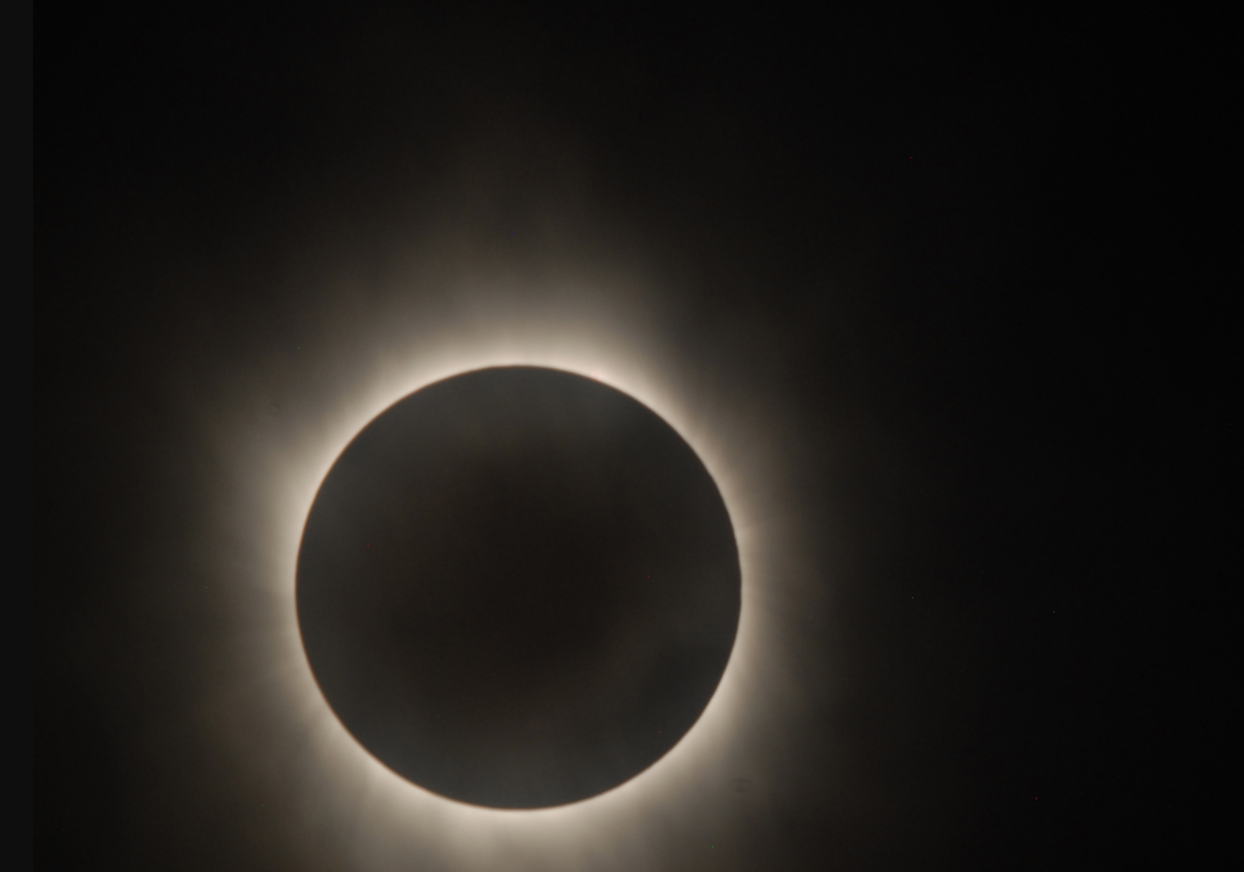
Rider Fulks, wearing a T-shirt that read “Big Dreamer,” patiently awaited a break in the cloud cover atop the Maryland Science Center rooftop Monday afternoon, hoping to glimpse the first eclipse in nearly a century to sweep across the country.
Suddenly, at about 1:15 p.m., the sky broke clear.
The awestruck Parkton 7-year-old, donning safety glasses, tried to describe the rare celestial occurrence to his mother and 5-year-old brother: “It looks like the moon is taking a bite out of the sun,” he said.
The line outside the Science Center began forming a couple of hours before the Inner Harbor institution opened in anticipation of the eclipse, which turned night into day in a stretch of the U.S. from Oregon to South Carolina over the course of 90 minutes. In Baltimore, the eclipse wasn’t total, but estimated at 80 percent—though that hardly dimmed enthusiasm for the witnessing the historic alignment.
“We sold out all 300 tickets for each of our five rooftop viewing time slots,” said Science Center program manager Samantha Blau. “We expect more 3,000 people overall. It’ll be our busiest day of the year.”
Eclipses actually occur every 18 months or so, but they rarely darken a path that traverses the entire length of the country; instead dropping the moon’s shadow across one of the oceans or some other continent. The next eclipse path across a significant swath of the United States will arrive in 2024 when the shadow of the moon will move from Texas to New England, coming closest to Baltimore—about 300 miles away—somewhere in its swing between Cleveland and Buffalo.

The Science Center passed out special eclipse safety glasses to all those purchasing a timed pass to the rooftop viewing party, which also included a special exhibition on the sun. The Science Center had also ordered small, unused pizza boxes in advance of the event, assisting visitors in making their own pinhole viewing devices. Many families came equipped with their own pinhole devices made from cereal boxes, which seemed to work better for some than others.
“The tin foil got wrinkled on the drive over here,” said one mother, smiling as she shared safety glasses with her 5-year-old daughter. “Apparently, I needed to keep a better eye on the cereal box in the car.”
Dr. Lisa Schocket, ophthalmologist, and associate professor at the University of Maryland School of Medicine, was on hand as well to remind visitors not to look at the sun without proper precautions—not just during eclipses, but anytime—because of the potential harm to the retina.
Inside the Maryland Science Center, NASA’s livestream and coverage of the eclipse was screened at the Davis Planetarium.
In 2012, the Science Center partnered with NASA on a then-new permanent exhibition, Life Beyond Earth, which explores the solar system, and beyond, and also proved a popular destination for visitors Monday.
“The really cool thing is that today you don’t need to be an astronomer and you don’t need a telescope to watch something really cool in the sky,” said Blau.

